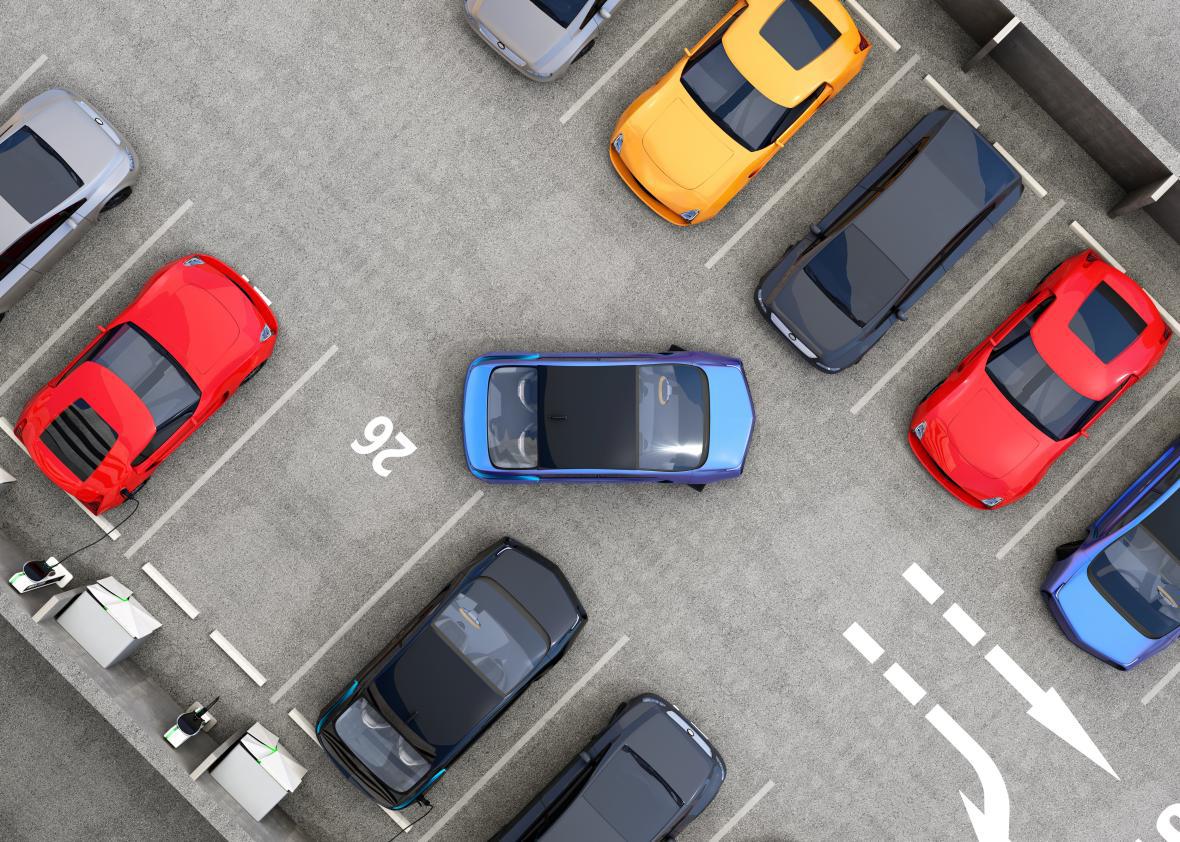According to a familiar cliché, it’s the journey that matters most. But let’s be honest, sometimes it’s just nice to know that there’s going to be a parking spot waiting for you when you arrive.
That may get just a little easier soon for users of Google Maps. According to reporting by Rita El Khoury of Android Police, a publicly available beta version of the app now provides limited information about parking conditions for users travelling to some “public destinations like malls and airports and various attractions.” What it won’t do—not now, at any rate—is show you where to find a spot, but it still seems likely to stave off a few headaches.
In its present incarnation, the feature is unobtrusive, but it’s also not yet hugely informative. As images on Android Police show, when you input a driving destination into the app, a small letter P will sometimes appear next to the total estimated time. A brief description accompanies this icon, indicating whether parking conditions are “Easy,” “Medium,” or “Limited.”
While a little more information is available when you unfurl the full directions, the app still only appears to offer general information, and as Ars Technica’s Valentina Palladino notes, “the descriptions are not real-time indicators.” To the contrary, they mostly serve as a reminder that Google’s ostensibly precise estimates are almost always inexact in one way or another. But, hey, it’s a pretty cool reminder!
It’s not wholly clear at this point where Google is pulling its parking data from. (Google has not yet responded to a request for comment; we’ll update if they provide any additional information.) There is, however, a possible clue in the feature’s apparent limitation to “public destinations.” In late 2016, the company debuted a feature that showed both how busy your destination would likely be and how long people tend to stay there. The new parking information may well piggyback on the data collection and analysis systems powering that earlier features.
In fact, an app called Pocket Parker has used a similar system since 2014, gathering passively generated data from users’ phones to evaluate parking conditions. Pocket Parker appears to be largely defunct today, which is understandable, since this approach presumably requires masses of existing users to work optimally—making a single-purpose app a hard sell. But masses of users are exactly what Google has. It’s no secret, of course, that the company has a habit of shoehorning other companies’ services into its suite of products—though it often does so by acquiring its smaller competitors outright, which doesn’t appear to be the case here. In all likelihood, this is simply a case of convergent appvolution.
In any case, we can hope that it’ll eventually pull other parking apps—such as those that enable you to more directly identify and target open spots—into its orbit, linking up with connected parking meters and sensor-enabled spots to provide even more precise information. Soon, we Odysseuses of the road may be able to cease our automotive twists and turns. This parking meter here? This is the Ithaca we’ve been longing for.
